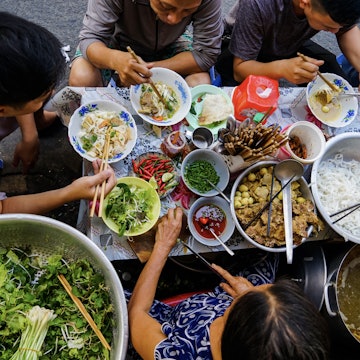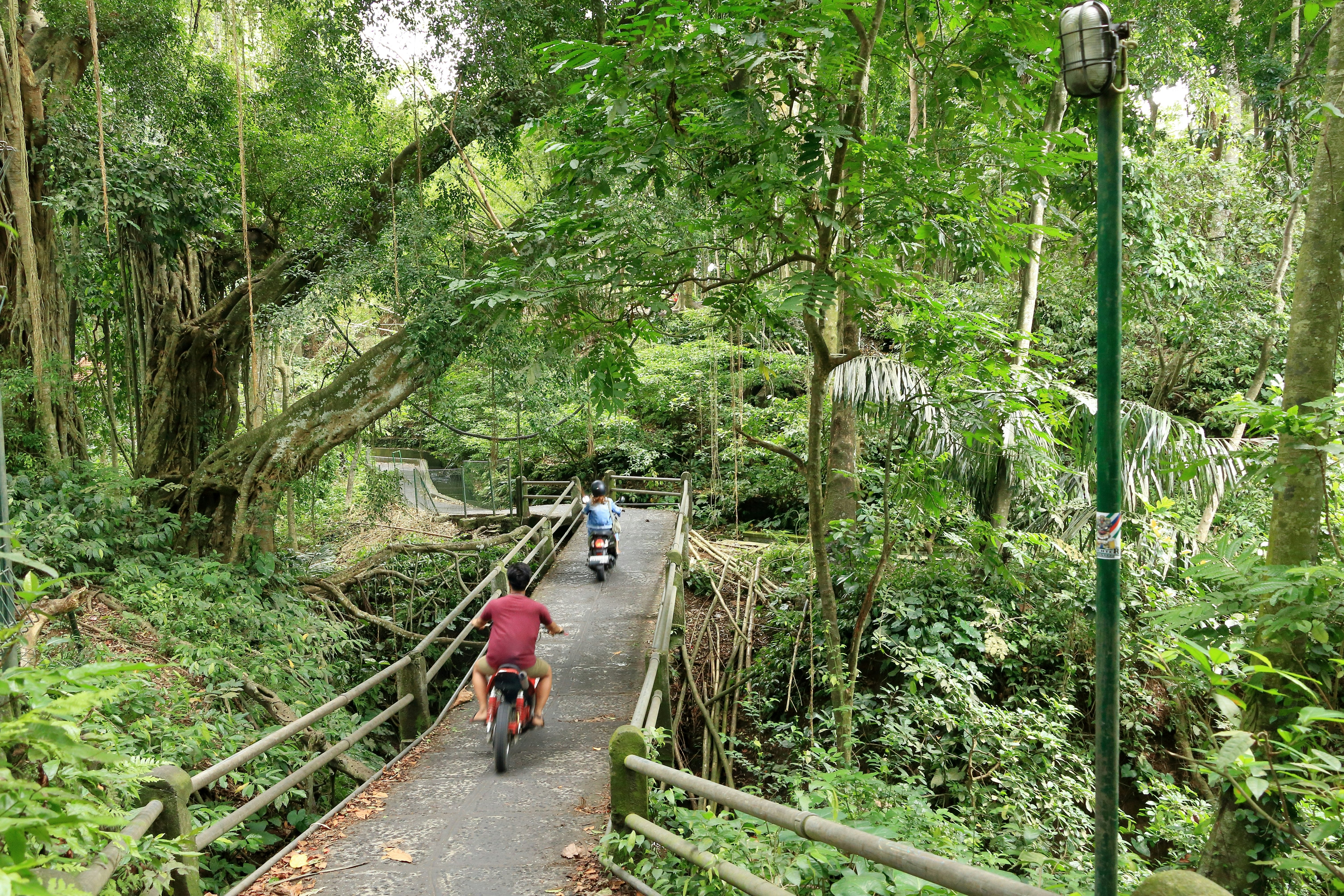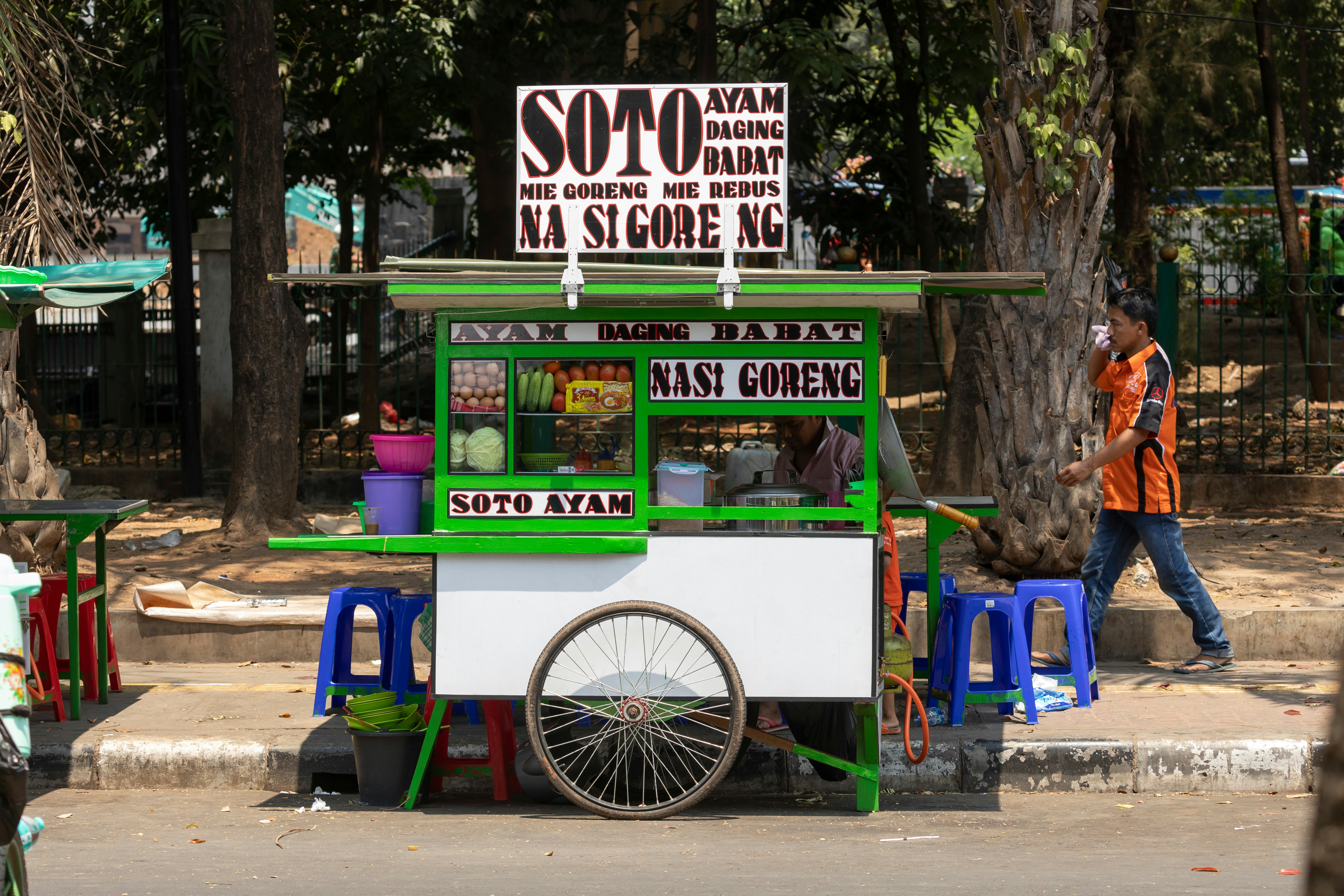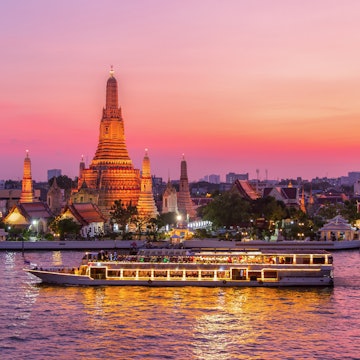

Lake Maninjau in West Sumatra, Indonesia. bangoland/Shutterstock
Indonesia is part of the world's largest archipelago, with thousands of islands stretching between the Indian and Pacific Oceans. You'll find world-class surfing, gorgeous rain forest hikes and full-of-flavor cuisine – but you don't need a fortune to experience any of it.
If you choose a simple beach-bumming lifestyle, you can expect to spend around a million rupiah per week in Indonesia. Though that sounds like a lot, 1,000,000Rp currently equals around US$62, so you’ll be transformed into a millionaire the moment you arrive.
You can also live the high life and remain on a budget. Some of the most luxurious five-star hotels on the planet are here, with low-season prices at just a fraction of the cost you'll find elsewhere.
This guide to daily costs and tips for traveling on a budget can help you save money on your visit to Indonesia.
Daily costs
Local coffee in a streetside warung (stall): 16,258Rp (US$1)
Cappuccino in a fancy café: 40,645Rp (US$2.50)
A hearty plate of fried rice or noodles: 16,258Rp (US$1)
The same meal in a tourist venue: 65,032Rp (US$4)
Cocktail at a happy-hour beach bar: 81,290 (US$5)
Beer in a hotel bar: 48,774Rp (US$3)
Glass of house wine at a resort: 97,548Rp (US$6); sometimes up to 40,6451Rp (US$25)
1.5L (50oz) bottle of water: 4064Rp (US$0.25)
Surfboard rental: 56,903Rp (US$3.50) per session
90-minute yoga class: 165,000Rp (US$10), or less if you get a package price

Find the best season for budget travel in Indonesia
October to April is the rainy season in Bali and central Indonesia and also the cheapest season to travel here. Unless you are going far off the beaten track – jungle trekking or volcano climbing, for example – this is often a lovely time to be in Indonesia. The rains are usually short and sharp, and interspersed with blissful sunny days. (Avoid Christmas school holidays and New Year's, though.)
Find affordable flights
Sign up to Jack’s Flight Club for prompt updates about cheap flights to Jakarta or Bali. Within Indonesia, national carrier Garuda Indonesia, Air Asia or Lion Air link all the other main islands. For a rough idea of flight prices, you can travel one way between Jakarta and Bali or Bali to Labuan Bajo (for access to Komodo) starting around 812,902Rp ($50).

Explore Indonesia's diverse islands on a budget
Bali is substantially more expensive than neighboring Java, which is in turn slightly more expensive than Sumatra, but the sheer amount of competition vying for the tourist dollars means you can stay cheaply. In Bali, two people can spend around 325,160Rp (US$20) a day, including a private room, meals and scooter rental.
In general, the cost of living diminishes as you travel to less touristed islands. Bear in mind that at the extremes of the world’s greatest island nation – in the Alor archipelago, for example, or in the distant Maluku islands – prices are higher due to the transportation costs of getting goods (and vehicles and fuel) to remote regions.
Book the best-value accommodations
You can find cost-effective accommodations throughout Indonesia. You'll probably want to book at least some in advance, of course, but if every dollar counts consider booking just the first night or two, because the best deals – in hostel-packed Kuta, for example – are often found by asking around. Private hostel rooms are available from as low as 32,516Rp (US$2) in some parts of Indonesia.
It can often be more cost-effective to rent a long-term bungalow or villa through an apartment rental site than to pay for a nightly hotel room. A good air-conditioned double room in Bali will cost 130,064Rp (US$8) a night (breakfast included), but a self-catering bungalow in the central Ubud area with its own garden and kitchen might cost around 97,548Rp (US$6) a night if you book a full month.

Rent an inexpensive car or scooter
Public transportation in Indonesia is cheap but erratic, so most travelers opt to rent a vehicle. To keep costs at a minimum, consider renting long-term. Scooters are a cheap transporation option – often around 32,516–48,774Rp (US$2–3) a day if you rent for a week or more – but for the sake of safety and security, consider upgrading to a car, which will set you back around 243,870Rp (US$15) per day, which is especially affordable if you're traveling with friends. With petrol costing less than 10,567RP (US$0.65) per liter (2763Rp [US$0.17] per gallon), driving in Indonesia is inexpensive.
Keep in mind, though, that driving here, especially in Bali with its swarms of motorbikes, is not for the fainthearted. If you prefer not to drive yourself, you can hire a car and driver for around 48,7741 (US$30) per day.
Save on local transportation with taxicab apps
Bluebird Taxis has 23,000 vehicles throughout Indonesia, and while convenient, they can be about twice the price of Grab, which merged with Uber in Asia.
Before leaving home, download the apps for Grab and Gojek, which claims to have two million motorbike taxis across Southeast Asia. These options mean you'll only pay local rates for transport, so no haggling every time you need to take a car or motorbike taxi, and no need for complex multilingual conversations trying to confirm destinations or give directions.
Consider ferries, buses and trains if you have enough time
Ferries connect some of the islands, and they're inexpensive (though erratic and time-consuming). Take the trip from Labuan Bajo to Bali, for example: the weekly ferry costs less than 325,160Rp (US$20), but it's a 33-hour ride compared with an hour-long flight (902,638Rp [US$55]).
On larger islands, long-distance buses connect all the main cities, but only on Java and parts of Sumatra can you count on getting around by rail. As a general rule, a train seat will cost you about 24,387Rp (US$1.50) for each hour of travel, and you can book through Kareta Api Indonesia. Buses are usually slightly cheaper and almost always faster than Indonesian trains.

Explore local foods
You can find cheap eats throughout Inonesia. While you might not encounter the same culinary variety as in Malaysia, Thailand and Singapore, you can count on finding hearty local food at affordable prices. Unless you are in a tourist center, you can usually find a single-plate meal – normally nasi goreng (fried rice) or mie goreng (fried noodles) – for less than 16,258Rp (US$1). Because they are cooked on the spot, ingredients are usually fresh and delicious.
The West Sumatran city of Padang has exported its fine gastronomic traditions, and you will find masakan Padang (literally Padang-style cooking) eateries in virtually every town throughout the country – typically in a buffet where you are given a plate of rice and then simply point to whatever extras you fancy. You can often grab a veritable feast for around 32,516Rp (US$2). Try to pick establishments that seem to have a constant turnaround of diners.
Stay off the booze
The best way to keep costs low in Indonesia is simply to avoid alcohol. A bottle of Bintang, the standard local beer, is about 32,516Rp (US$2), a bottle of cheap wine starts at around 165,000Rp (US$10) and a bottle of imported gin or whiskey will likely set you back 48,7741Rp (US$30) or more. Those are supermarket prices – the figures will likely triple in a trendy bar. If you want to party without breaking the bank, look out for the ubiquitous two-for-one happy-hour deals.
Remember to haggle
Haggling is a way of life in Indonesia, and outside of big, fixed-price malls and supermarkets, you will be expected to haggle for most things. Although many travelers are uncomfortable about bargaining for purchases, you’ll soon find that a smile, a joke and a couple of reliable stock phrases can transform a boring shopping trip into an opportunity to bond with local people. At its best, haggling turns a mere business transaction into something far more human.
"Bukan harga bule" (not foreigner price) is good for a smile.
"Saya sudah bankrupt" (I’m already bankrupt) guarantees outright belly laughs.
Remember, though, you should only haggle toward establishing a fair price that is good for both parties. Some travelers pride themselves on their tough haggling skills, believing that a street vendor will always be making a profit regardless. This is not always true: most store-holders will prefer to sell at a loss if it is the only way that they can feed their family that night.
















